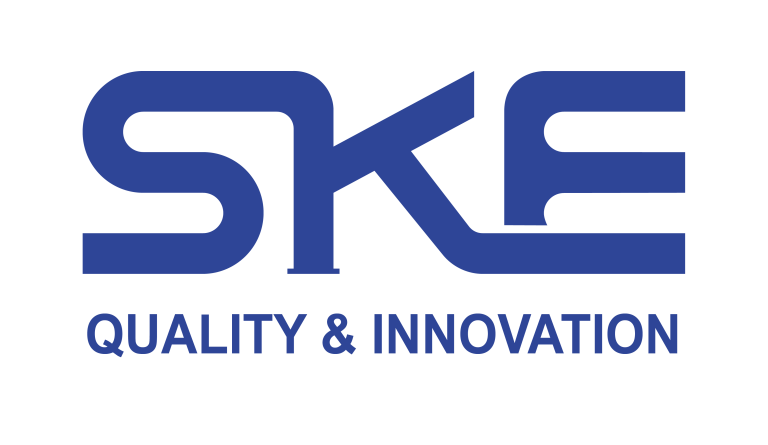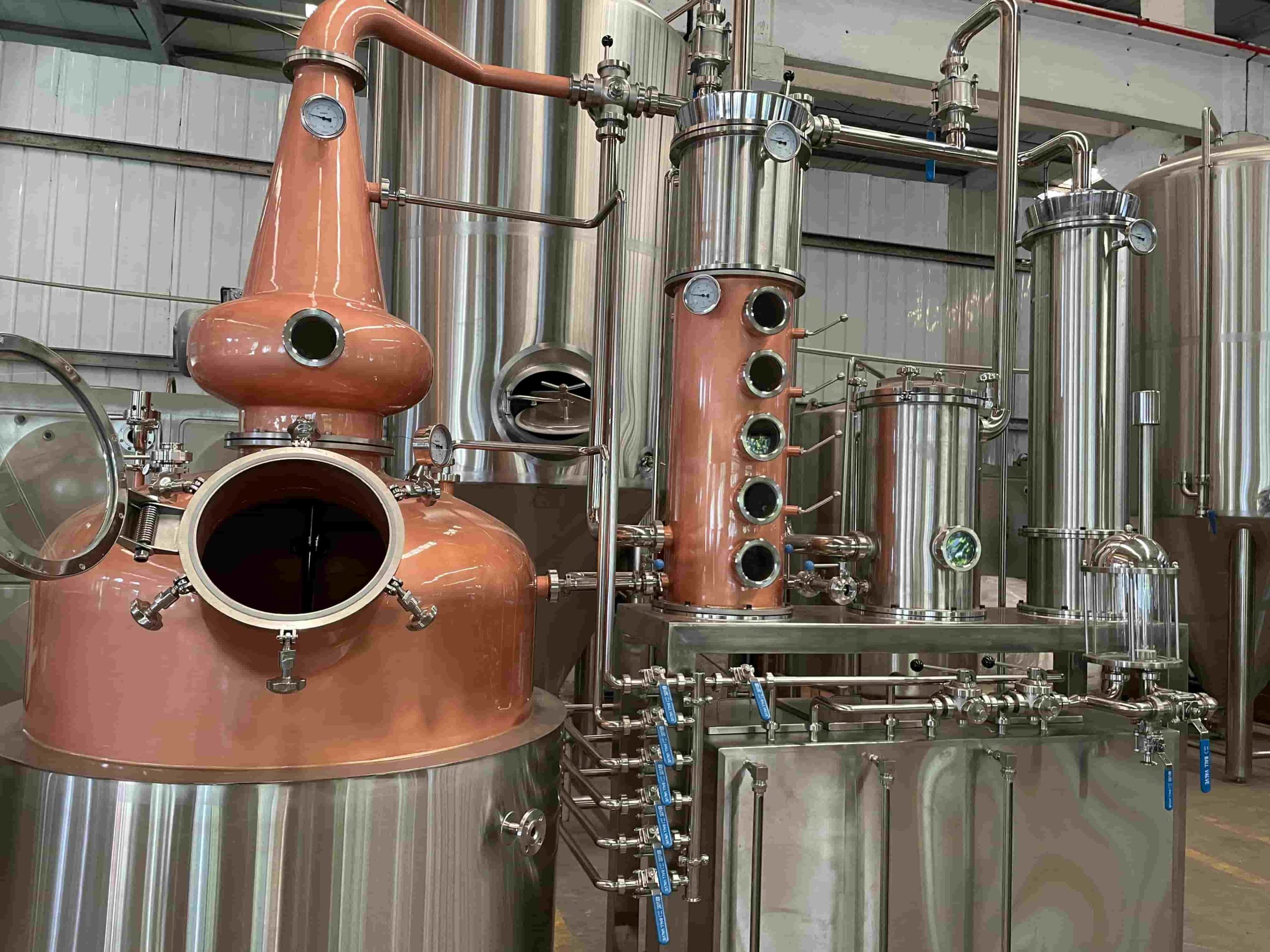A distillation system can transform a simple batch into an award-winning spirit. Choosing a premium setup from SKE Equipment means precise separation, consistent quality, and streamlined operations. In this guide, we’ll cover:
Key components that make a distillation system work smoothly
How advanced features yield higher-quality distillate
Steps to install and commission any distillation system
Best practices for running and maintaining your setup
Common questions about selecting and using a distillation system
By the end, you’ll see why investing in a modern distillation system is crucial for steady flavor profiles, reduced waste, and scalable output—even if you’re launching a small craft distillery or upgrading an existing production line.
1. Anatomy of an Effective Distillation System
Every reliable distillation system relies on several essential parts working in concert:
Boiler/Reboiler
The boiler in a distillation system heats fermented wash until it vaporizes. SKE Equipment uses corrugated steam jackets to ensure even heating, so vapors form quickly and consistently.Column Section
In a quality distillation system, the column promotes separation of alcohol from other compounds. Options include copper plates or structured packing, which provide repeated vapor-liquid contact. SKE Equipment supplies modular plates and packing to match specific output and purity goals.Condenser Unit
After vapor passes through the column, it enters the condenser, where it returns to liquid form. SKE Equipment’s condensers—whether shell-and-tube or spiral—handle large vapor volumes without clogging, maximizing yield in your distillation system.Reflux Divider & Controls
Many distillers rely on a reflux divider to return some condensed liquid back to the column, refining purity. Automated controllers from SKE Equipment allow you to program precise reflux ratios—making the distillation system largely self-regulating.Instrumentation & Control Panel
Accurate temperature probes, pressure gauges, and an intuitive touchscreen keep your distillation system on track. SKE Equipment integrates PLCs with preloaded recipes for various spirits, enabling quick startup and predictable performance.Auxiliary Pumps & Piping
Pumps move condensate and wash throughout your distillation system. Sanitary stainless-steel piping, laser-welded for leak-free operation, ensures hygienic processing. SKE Equipment uses Tri-Clamp fittings so you can disassemble and clean quickly.
2. Why a Premium Distillation System Pays Off
Opting for a high-end distillation system from SKE Equipment delivers clear advantages compared to basic rigs:
Consistently High-Quality Spirits
A quality distillation system ensures that cut points between heads, hearts, and tails occur at the same temperatures every run. By maintaining tight control over column zones, you capture only the purest fraction and avoid off-flavors.Improved Efficiency & Throughput
Corrugated jackets and efficient column internals heat and cool more rapidly. SKE Equipment’s designs reduce run times by up to 25%, letting you complete more batches per week without overworking your team.Lower Energy Costs
Modern distillation system setups often include heat-recovery loops: hot condensate preheats incoming wash, cutting steam or utility usage by up to 20%. Over months, those savings can offset the initial cost of a premium unit.Built-In Safety
Entry-level setups may lack reliable pressure relief or alarm functions. Every SKE Equipment distillation system features high-temperature cutoffs, automated shutdowns, and certified relief valves—keeping both operators and equipment safe.Scalability & Adaptability
Starting with a smaller pilot unit? You can grow by adding extra column plates or a second condenser. SKE Equipment’s modular approach ensures your distillation system scales with your brand, avoiding costly full-system replacements.Reduced Maintenance Interruptions
Laser-welded seams and premium stainless steel surfaces resist leaks and corrosion. The result: less downtime for repairs and greater uptime for production.
3. Installing & Commissioning Your Distillation System
A top-tier distillation system needs careful setup. Follow these steps to start right:
3.1 Site Preparation
Check Floor Capacity: Ensure the floor can support the combined weight of your distillation system when full. For example, a 1 000-liter boiler and column might weigh 1 500 kg.
Plan Utilities & Ventilation: Run steam lines or set up an electric heating element. Provide proper ventilation so vapors vent safely.
Allow Service Clearance: Leave at least 1 meter around the distillation system for maintenance and ventilation.
3.2 Mechanical Installation
Secure Base & Leveling: Position the boiler and column on level supports. If foot traffic is heavy, use vibration mounts. Align column flanges within ±0.5 mm to prevent stress.
Connect Steam Jackets & Piping: Attach steam jackets, condensate returns, and reflux lines using tri-clamp fittings. SKE Equipment pre-inspects these connections, but double-check clamps to avoid leaks.
3.3 Control System Hookup
Install Sensors: Place RTDs in thermowells at key points—boiler outlet, column midway, and condenser input—to feed accurate data to your PLC.
Mount Pressure Transmitters: Install gauges on the boiler and steam jacket. SKE Equipment calibrates these to ±2 % accuracy, ensuring precise safety thresholds for your distillation system.
Program PLC & HMI: Load built-in PID loops for boiler, column, and reflux control. Set high-temperature cutoffs a few degrees above normal to trigger an automatic shutdown if needed.
3.4 Leak & Pressure Testing
Water-Only Test: Fill the boiler with water, heat to 100 °C, and raise pressure to 1.3× design capacity (e.g., test a 3-bar system at 3.9 bar). Inspect every weld and fitting for drips.
Steam-Only Check: After draining test water, run steam through the jacket and boiler. Verify jacket pressure stabilizes and that condensate flows properly into recovery vessels.
3.5 First Production Run
Use a Low-Gravity Wash: Charge the boiler with 5–6 % ABV wash to reduce foaming risk.
Column Setup: Start vaporizing and adjust reflux to hold a stable column in your distillation system—a 3:1 ratio (three parts returned to one collected) is a good starting point.
Collect Hearts: When top temperature stays at 78–80 °C, collect the hearts portion. SKE Equipment’s HMI can switch automatically between heads, hearts, and tails on a timer or temperature threshold.
4. Operating & Maintaining Your Distillation System
To keep a distillation system performing well, follow these routines:
4.1 Daily Startup Checks
Visual Inspection: Look over tri-clamp clamps, valves, and gaskets for moisture. Any weeping means re-tighten clamps before running the system.
Sensor Verification: Use a calibrated RTD thermometer to spot-check column and boiler readings. Adjust PLC offsets if sensors deviate by more than 1 °C—this keeps your distillation system precise.
Reflux Line Check: Confirm no kinks or blockages. Smooth flow is essential for consistent separation.
4.2 Typical Distillation Cycle
Charge Boiler & Heat
Fill a boiler to about 80 % capacity. Heat to 78 °C, simmer gently, and monitor steam pressure.
Heads Collection
Once the column top sees around 62 °C, divert the first small portion (2–5 %) to heads. Those contain volatile compounds you’ll discard.
Hearts Cut
When the top temperature stabilizes at about 78–80 °C, switch to hearts. In a well-tuned distillation system, these cuts yield the best balance of flavor and ABV.
Tails Collection & Shutoff
As temperatures climb above 92 °C, move to tails. Shut off heat, let the system cool, then depressurize and open for cleanup.
4.3 Cleaning & Sanitation
Monthly CIP
Circulate a 2 % caustic solution at 75 °C through the boiler, column, and condenser for 20 minutes. Rinse to neutral pH, then run a 1 % acid rinse at 60 °C for 10 minutes. Follow with a hot water rinse—this keeps your distillation system clean and free of buildup.
Quarterly Disassembly
Remove plates or packing from the column. Clean with a nonabrasive brush and a passivation solution. Reassemble carefully, aligning plates within ±1 mm to preserve efficiency.
Heat Exchanger Care
Backflush condensers weekly with warm water at 2 bar. Monthly, circulate an acid descaler at 40 °C to remove scale. This prevents blockages in your distillation system.
4.4 Preventive Maintenance
Quarterly
Test relief valves by pressurizing them to 1.5× setpoint (e.g., 4.5 bar for a 3 bar valve). Ensure they open within ±5 % of the nominal rating. This keeps your distillation system safe.
Semi-Annual
Pressure-test the boiler and steam jacket to 1.5× design pressure. Check all RTDs and pressure transmitters for accuracy. Replace any worn gaskets or O-rings.
Annual
Recalibrate instrumentation—RTDs, transmitters, and flow meters—against traceable standards. Conduct dye-penetrant inspections on weld seams to catch micro-cracks before they grow. This helps your distillation system run reliably for years.
4.5 Troubleshooting Tips
Column Flooding
If liquid backs up, reduce steam flow and increase reflux. Check for residue on plates—any fouling can disrupt vapor flow in your distillation system.
Slow Heat-Up
Confirm steam traps are clear and that jacket lines have no air pockets. Bleed air via vent valves atop the jacket lines.
Inconsistent Cuts
Inspect sensor calibration and verify stable boiler pressure. Fluctuating steam pressure often causes temperature swings, making cuts unpredictable in a distillation system.
5. Customer FAQs: Distillation System Insights
Q1: How do I pick the right capacity for my craft distillery’s first distillation system?
A1: Estimate your monthly production. For example, producing 500 L monthly typically requires a 1 000 L boiler, allowing two runs per day. A larger 1 500 L setup provides extra headspace for experimental recipes, making your distillation system more flexible.
Q2: Can one distillation system handle whiskey and gin production?
A2: Yes—a modular distillation system by SKE Equipment lets you swap column plates or packing. Use copper trays for whiskey, then switch to a gin basket insert for botanicals. Automated reflux controls adjust cuts precisely for each spirit style in your distillation system.
Q3: What reflux ratio works best for neutral spirits versus flavored spirits?
A3: For a neutral vodka-style spirit, start with a 10:1 reflux ratio (ten parts returned, one part collected). For a richer whiskey, try 3:1 or 2:1 to keep more desirable compounds. SKE Equipment’s automated reflux divider programs these ratios directly into your distillation system.
Q4: How many plates or packing stages are needed in a distillation system?
A4: It depends on your ABV targets. A 5-plate column can reach around 70 % ABV, while a 15-plate or packed column may exceed 90 % on the first pass. SKE Equipment offers plate counts from 5 to 30 and high-efficiency packing options for maximum flexibility in any distillation system.
Q5: What routine maintenance ensures the longest life for my distillation system?
A5: Follow a strict schedule: Monthly CIP, quarterly column disassembly, and annual calibration of all sensors. Semi-annual pressure tests on the boiler and jacket keep it compliant. This regimen helps your distillation system run reliably for 15+ years.

